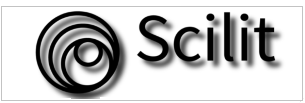Pelatihan Kecerdasan Buatan Untuk Mendukung Kegiatan Belajar Mengajar Guru Ma Nwdi Kelayu
DOI:
https://doi.org/10.29408/jt.v3i1.31051Keywords:
Artificial Intelligence, Cloud Technology, MA NWDI Kelayu, TrainingAbstract
This Community Service Program focuses on training teachers at Madrasah Aliyah NWDI Kelayu to utilize artificial intelligence and cloud technology to support teaching and learning activities. In the Society 5.0 era, the ability to integrate modern technology into education is crucial. This program aims to enhance teachers' competencies in adopting technologies such as Gamma, Question Well, and ChatGPT, and utilizing Google services like Google Drive and Google Forms. The training was conducted intensively through theoretical and practical sessions designed to strengthen teachers' technical understanding and skills. The results of this training indicate a significant improvement in teachers' ability to implement technology in the learning process. Trained teachers are now capable of using these technologies to create more interactive and efficient learning experiences, which, in turn, are expected to improve student outcomes. This program is also expected to serve as a model for similar initiatives in other schools aiming to adopt technology in education
References
Chusyairi, A., Setiyadi, D., Saludin, S., & Pramudita, R. (2021). Pelatihan Pembuatan Media Pembelajaran Jarak Jauh dengan Google Classrom di SMAN 15 Kota Bekasi. Jurnal Pengabdian Kepada Masyarakat, 27(1), 44–50. https://jurnal.unimed.ac.id/2012/index.php/jpkm/article/view/22061
Evi Wijayawati, & Sediono. (2024). Peran Mahasiswa Program Asistensi Mengajar Dalam Meningkatkan Kompetensi Dan Adaptasi Teknologi SDN 1 Gondangkulon. Jurnal Teknologi Informasi Untuk Masyarakat, 2(2), 61–68. https://doi.org/10.29408/jt.v2i2.27736
Fathurrahman, I., Usma Wardani, I., Mu’Tashim, A., Pranata, A., Maulidi, D., Sholihah, H., Sabirin Haris, M., & Zulkipli. (2024). Pelatihan Microsoft Office untuk Meningkatkan Keterampilan Digital Remaja di Desa Menceh. Jurnal Teknologi Informasi Untuk Masyarakat, 2(2), 79–90. https://doi.org/10.29408/jt.v2i2.28189
Manullang, S., Siregar, N., Sitompul, P., Matematika, J., Matematika, F., & Alam, P. (2020). Abstrak.
Panjaitan, W. J., & Lupiana, F. (2023). Penerapan Tranformasi Digital dan Hambatannya Pada Industri Kuliner di Indonesia. Riset Manajemen Dan Ekonomi, 1(2), 278–301. https://doi.org/10.54066/jrime-itb.v1i2.650%0APenerapan
Polat, H. (2023). Transforming Education with Artificial Intelligence: Shaping the Path Forward. September, 3–20. www.istes.org
Qusyairi, M., Mu’ammaruddin, M. Abdul Azmi, Samsul Hadi, Susilawati indah cahayani, & M.taufik walhidayah. (2024). Pelatihan Dasar-Dasar Komputer dan Teknologi Informasi bagi Siswa Sekolah Dasar di Desa Masbagik Timur. Jurnal Teknologi Informasi Untuk Masyarakat, 2(2), 148–155. https://doi.org/10.29408/jt.v2i2.28481
Rachmijati, C., Anggraeni, A., & Parmawati, A. (2019). Pelatihan Classroom Task Untuk Guru Paud Di Desa Palinggihan Kecamatan Plered Kabupaten Purwakarta. Jurnal Pengabdian Kepada Masyarakat, 25(2), 91. https://doi.org/10.24114/jpkm.v25i2.13357
Ratnasari, D. H., & Nugraheni, N. (2024). Peningkatan Kualitas Pendidikan Di Indonesia Dalam Mewujudkan Program Sustainable Development Goals (Sdgs). Jurnal Citra Pendidikan, 4(2), 1652–1665. https://doi.org/10.38048/jcp.v4i2.3622
Salamah, W. (2020). Deskripsi Penggunaan Aplikasi Google Classroom dalamProses Pembelajaran. Jurnal Penelitian Dan Pengembangan Pendidikan, 4 (3), 533538.
Septiana, T., Kurniawan, D., Juliati, J., Sunandi, I., & Nurbaya, S. Z. (2022). Adopsi Teknologi dalam Pendidikan Hibrida: Tantangan dan Peluang bagi Institusi Pendidikan Tinggi. Jurnal Pendidikan Tambusai, 6(2), 16835.
Trilaksono, A. R. (2020). Efektivitas Penggunaan Google Drive Sebagai Media Penyimpanan Di Kalangan Mahasiswa. Jurnal Digital Teknologi Informasi, 1(2), 91. https://doi.org/10.32502/digital.v1i2.1651
Widayanti, T. (2021). Use of Google Form in Support of Data Collection for Student Scientific Work. Judimas, 1(1), 85. https://doi.org/10.30700/jm.v1i1.1015
Downloads
Published
How to Cite
Issue
Section
License
Copyright (c) 2025 Hadian Mandala Putra, Ida Wahidah, Muhammad Iman Darmawan, M Nuzuluddin

This work is licensed under a Creative Commons Attribution 4.0 International License.
Copyright & License
Copyright
Authors published in this journal agree to the following terms:
- The copyright of each article is retained by the author (s) without restrictions
- The journal allows the author(s) to retain publishing rights without restrictions
- The author grants the journal the first publication rights with the work simultaneously licensed under the Creative Commons Attribution License, allowing others to share the work with an acknowledgment of authorship and the initial publication in this journal.
- Authors may enter into separate additional contractual agreements for the non-exclusive distribution of published journal versions of the work (for example, posting them to institutional repositories or publishing them in a book), with acknowledgment of their initial publication in this journal
- Authors are permitted and encouraged to post their work online (For example in the Institutional Repository or on their website) before and during the submission process, as this can lead to productive exchanges, as well as earlier and larger citations of published work
- Articles and all related material published are distributed under a Creative Commons Attribution- 4.0 International Public License (CC - BY 4.0).
License
Teknokrat: Teknologi Informasi untuk Masyarakat is licensed under a Creative Commons Attribution- 4.0 International Public License (CC - BY 4.0).
![]()
You are free to :
Share — copy and redistribute the material in any medium or format
Adapt — remix, transform, and build upon the material for any purpose, even commercially
Under the following terms :
Attribution — You must give appropriate credit, provide a link to the license, and indicate if changes were made. You may do so in any reasonable manner, but not in any way that suggests the licensor endorses you or your use.
No additional restrictions — You may not apply legal terms or technological measures that legally restrict others from doing anything the license permits.














